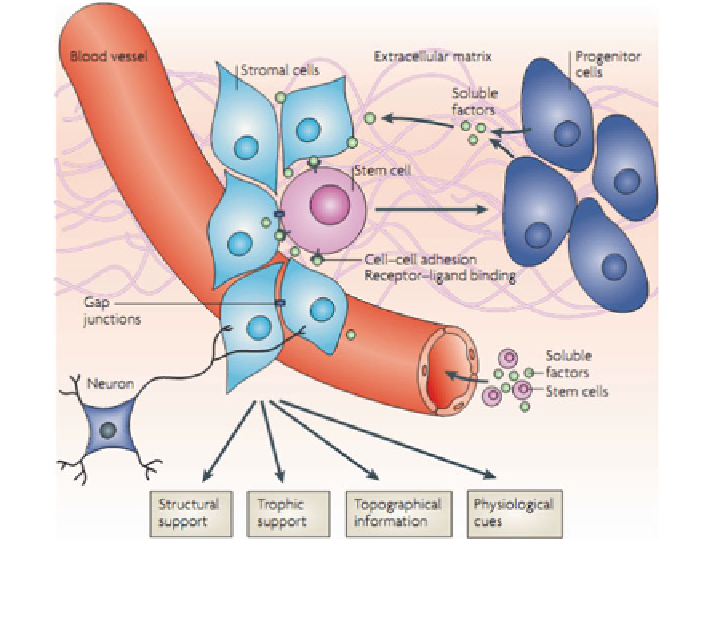Biomedical Engineering Reference
In-Depth Information
Fig. 1 Elements of the local microenvironment that participate in regulating the function of a
stem cell in its niche,
including soluble
factors, extracellular
matrix,
architectural
space,
biophysical forces and intercellular interactions (reprinted by permission from [
5
])
Two major adult stem cell populations reside within the BM niche: the hemato-
poietic stem cells (HSCs) and the mesenchymal stem cells (MSCs).
HSCs, which regenerate the entire blood and immune system, have been used in
BM transplantation to treat blood diseases (e.g., aplastic anemia, thalassemia and
Gaucher's disease) and to reconstitute the patient's hematopoietic system after
undergoing chemotherapy or radiotherapy to treat cancers. These stem cells seem
to have little function outside their specific anatomic locations. It is the specific
cues from neighboring cells, i.e., the osteoblasts and the stromal cells, that allow
stem cells to persist and to change in number and fate.
The clinical need for ex vivo expansion of HSCs has motivated research into
identifying the main BM niche regulators and unraveling the molecular pathways
that mediate the HSC niche function (Fig.
2
). Osteoblasts were shown to be of
great importance for controlling the HSC niche size [
4
], but other cell types, like
osteoclasts, endothelial cells and mesenchymal progenitors, have also been
involved in modulating HSC fate (reviewed in [
5
]). In addition to the cellular
elements, several signaling molecules, including osteopontin [
6
], trombopoietin
[
7
] and N-cadherin [
8
], as well as other factors, like increased extracellular
calcium-ion concentration [
9
] and low oxygen concentration [
10
,
11
], have been
shown to affect HSC behavior and to support the establishment of the niche

Search WWH ::

Custom Search